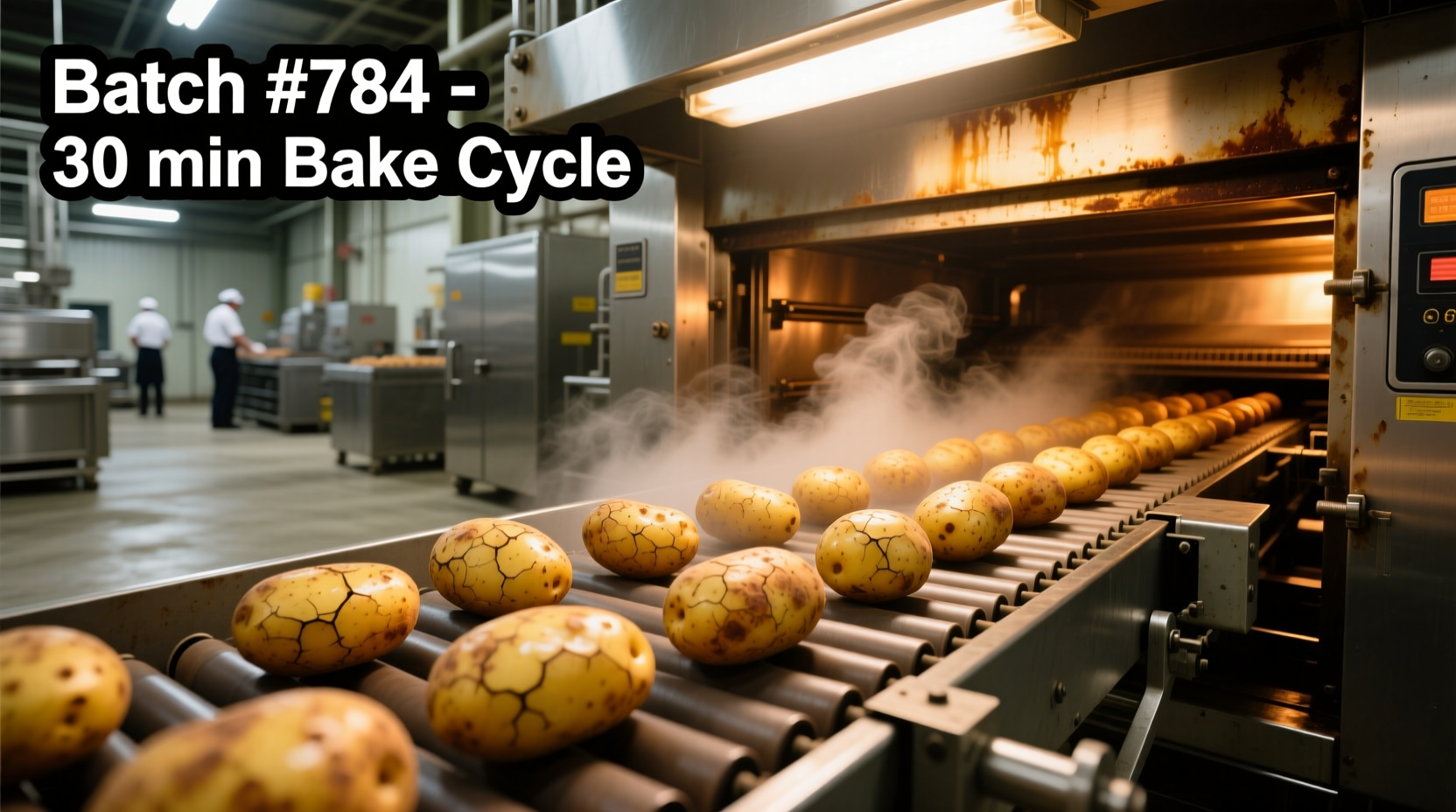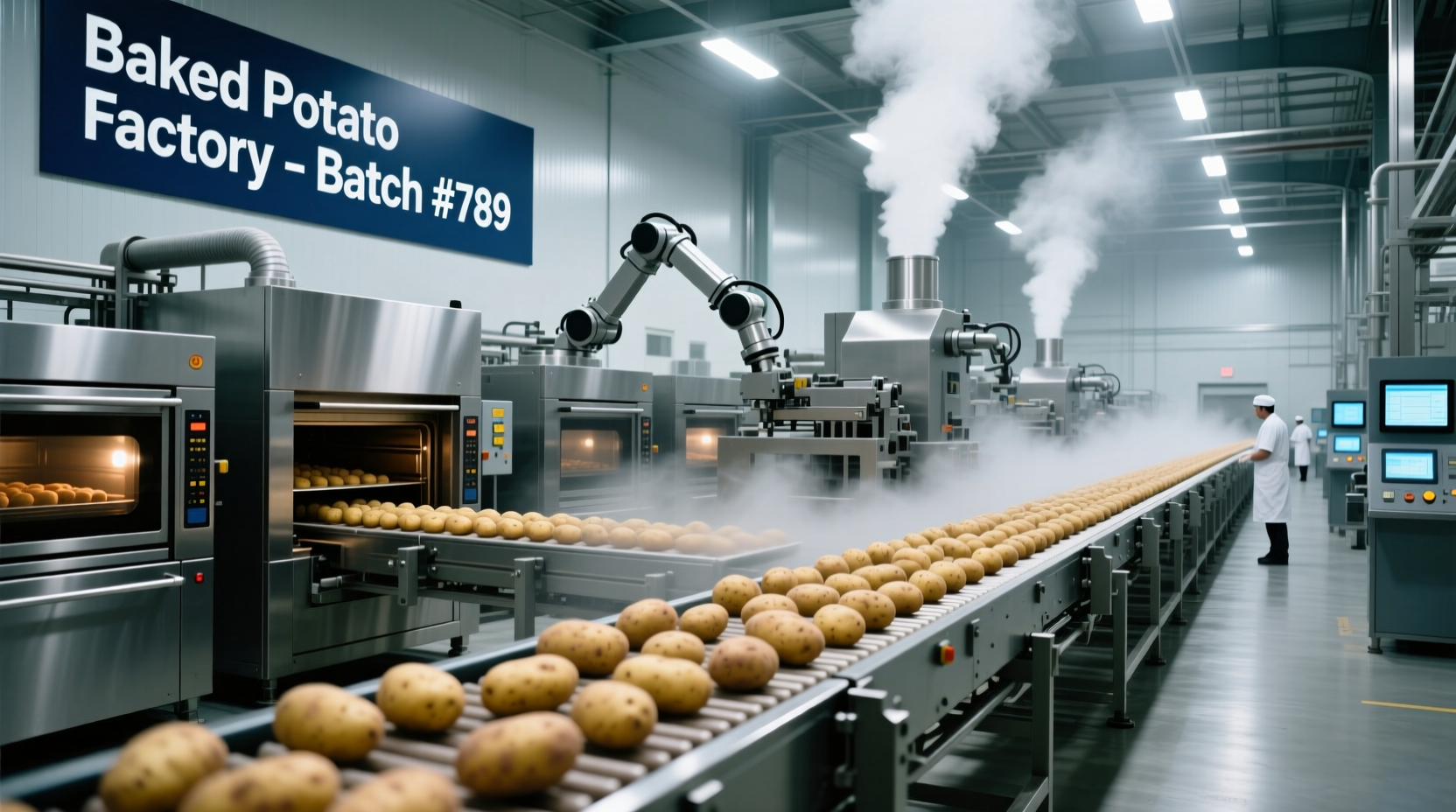Ever wondered how restaurants serve perfectly baked potatoes in minutes while maintaining consistent quality? The answer lies in specialized commercial operations known as bake potato factories. These facilities transform raw potatoes into ready-to-serve products through precision engineering and food science principles. Understanding this process reveals why commercial baked potatoes differ significantly from home preparations and how they've become essential to modern food service operations.
What Exactly Is a Bake Potato Factory?
A bake potato factory isn't a single building but rather a specialized production line within larger food processing facilities. These operations focus exclusively on transforming raw potatoes into fully cooked, flash-chilled products ready for food service distribution. Unlike home kitchens where potatoes bake for 45-90 minutes, commercial facilities process thousands of potatoes hourly using conveyor-based baking systems that maintain precise temperature and humidity controls.
| Home Baking | Commercial Production |
|---|---|
| 45-90 minute baking time | 18-25 minute industrial process |
| Variable results | Consistent internal temperature (205°F/96°C) |
| No standardized cooling | Flash-chilled to 40°F (4°C) within 90 minutes |
| Immediate consumption | 7-10 day refrigerated shelf life |
The Commercial Baked Potato Timeline
Commercial baked potato production evolved significantly over the past 50 years:
- 1970s: Early adoption by fast-food chains using modified conventional ovens
- 1985: Introduction of continuous conveyor baking systems (USDA Food Safety and Inspection Service documented the first approved systems)
- 1998: Implementation of Hazard Analysis Critical Control Point (HACCP) protocols specific to potato processing
- 2010: Development of flash-chilling technology extending shelf life while maintaining texture
- 2020s: Integration of AI temperature monitoring and automated quality control systems
How Commercial Baking Actually Works
The industrial process follows strict parameters that home cooks can't easily replicate. Potatoes enter the facility where they undergo:
- Selection: Only specific varieties like Russet Burbank are used for their ideal starch content and skin integrity
- Cleaning: Triple-washed systems remove soil while preserving natural moisture barrier
- Pre-heating: Gradual temperature increase prevents skin cracking during baking
- Conveyor Baking: Moving through multi-zone ovens maintaining 375-400°F (190-204°C) with precise humidity control
- Flash Chilling: Rapid cooling preserves texture and prevents bacterial growth
- Quality Control: Every batch undergoes temperature verification and visual inspection
According to the USDA Food Safety and Inspection Service, properly processed commercial baked potatoes must reach a minimum internal temperature of 205°F (96°C) and be cooled to 40°F (4°C) within 90 minutes to prevent bacterial growth.

When Commercial Baked Potatoes Make Sense
Understanding the appropriate contexts for commercial baked potatoes prevents misuse. These products excel in:
- High-volume restaurant operations serving 100+ baked potatoes daily
- Situations requiring consistent presentation across multiple locations
- Operations with limited kitchen space or staff
- Emergency food service scenarios requiring quick deployment
However, they're inappropriate for:
- Specialty dining experiences emphasizing handmade preparation
- Operations serving fewer than 20 potatoes daily (cost prohibitive)
- Establishments marketing "freshly baked" as a key selling point
- Situations where customization is essential to the dining experience
Quality Control Standards You Should Know
Reputable commercial operations follow strict quality metrics beyond basic food safety:
- Moisture retention: Minimum 72% moisture content to prevent dryness
- Skin integrity: No more than 5% of batch may have skin damage
- Temperature consistency: Less than 5°F variation throughout the potato
- Shelf life verification: Daily testing of 3-day, 5-day, and 7-day samples
The National Potato Council's 2023 industry report shows that facilities meeting these standards experience 63% fewer customer complaints related to potato quality compared to those with basic food safety compliance only.
Practical Considerations for Food Service Operators
If considering commercial baked potatoes for your operation, evaluate these critical factors:
- Reheating protocols: Proper reheating requires convection ovens at 350°F for 12-15 minutes - microwaving destroys texture
- Storage requirements: Must maintain 38-40°F (3-4°C) refrigeration with humidity control
- Portion control: Commercial potatoes typically weigh 6.5-7.5 ounces after baking
- Customization limitations: Pre-baked potatoes can't accommodate last-minute preparation requests
Operators report that proper implementation of commercial baked potatoes reduces kitchen labor costs by 18-22% while increasing service speed by 30%, according to the 2024 National Restaurant Association Operations Report.
Common Misconceptions Clarified
Several myths persist about commercial baked potato production:
- Myth: Commercial potatoes contain preservatives
Fact: Properly processed baked potatoes require no additives - shelf life comes from precise temperature control - Myth: All commercial potatoes taste the same
Fact: Varietal selection and baking parameters create distinct flavor profiles - Myth: Commercial baking destroys nutrients
Fact: The FDA's 2022 nutrient retention study showed commercial baking preserves 92% of potassium content











 浙公网安备
33010002000092号
浙公网安备
33010002000092号 浙B2-20120091-4
浙B2-20120091-4